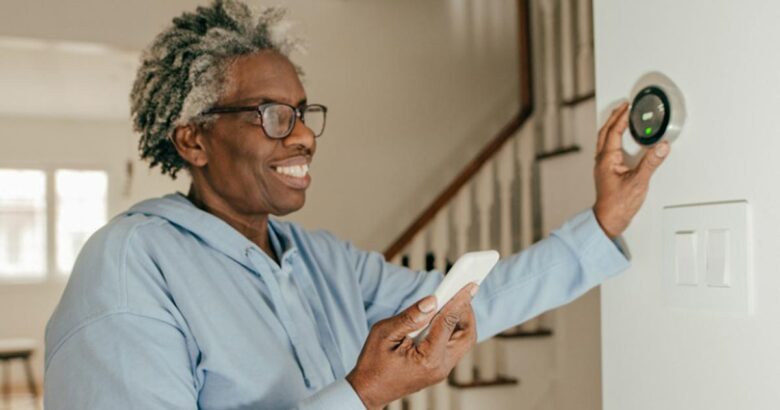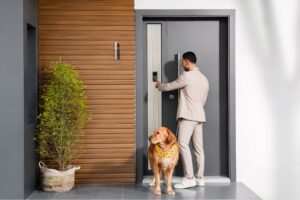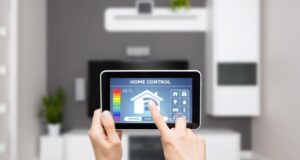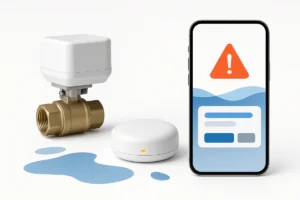Growing older doesn’t mean losing your independence; it means living smarter and safer. Smart technology is helping seniors age in their homes today. From wearable health monitors to voice-activated assistants, smart technology is changing the status quo of home care. High-tech, highly tactile tools provide seniors with personalized support and peace of mind. Families no longer have to worry, allowing seniors to enjoy their retirement with a sense of peace. Innovation and care are making home care a reality. This article introduces some of the best smart technologies that are helping seniors live healthier, safer, and more connected lives.
Wearable Health Monitors:
Seniors need wearable devices to monitor their health without having to visit the doctor. These smart, wristwatch-like devices can measure heart rate, blood oxygen levels, and sleep quality and detect falls. They’re powerful because they can alert caregivers or medical professionals immediately when something goes wrong. Some devices also feature GPS tracking to help locate missing people. Wearable devices help seniors with chronic conditions like diabetes or heart disease prevent health issues by providing continuous health data. Large screens, voice commands, and long battery life make these devices more accessible to seniors. With health monitoring wearables, seniors can go about their day with peace of mind, knowing that help is just a push of a button or a heartbeat away.
Smart Home Assistants:
Alexa, Nest, and HomePod have been upgraded from voice assistants to health companions. These devices can help with reminders, scheduling medications, and calling emergencies. A single voice command is all it takes. This convenience is especially ideal for those with limited mobility or vision. Seniors can ask for help checking the weather, playing their favorite music, turning off lights, and locking doors without having to get up. Additionally, smart assistants can work with other devices in the home to create a safe, seamless environment. Assistants can alert family members if someone falls or forgets to take medications. Smart assistants make aging in place possible with their comfort, convenience, and safety.
Fall Detectors:
Falls are a leading cause of injury in seniors, so timely action is crucial. Instant fall detection and alerts for caregivers have revolutionized this. Unlike physical panic buttons, AI sensors and motion analysis can detect falls even if the patient is unconscious or unable to call for help. Wearables and home motion monitoring systems incorporate certain sensors. When an unusual change is detected, the technology sends an instant alert via an app or emergency line. This technology reduces response time and can make the difference between success and failure in recovery. Fall detection gives seniors and their families peace of mind that help is always available.
Smart Medication Dispensers:
For seniors, managing different pills at different times of the day can be complex. Smart medication dispensers organize pills, remind users to take their medications, and dispense the correct doses. Some dispensers prevent overdoses by blocking medications, while others alert caregivers to missed doses. These dispensers are often connected to apps that allow family members or caregivers to monitor them remotely. This approach can improve medication adherence and reduce problems caused by missed or incorrectly taken doses. For adults with memory loss or cognitive decline, smart medication dispensers can provide structure and security without relying on medications, helping seniors stay healthy and independent.
Smart Monitoring and Environmental Sensors:
Environmental monitoring is a lesser-known but very useful technology for seniors living at home. Smart sensors in the home can detect smoke, gas leaks, and flooding. These small devices can provide quick alerts before minor problems escalate into disasters, preventing serious incidents. Motion sensors can track daily activities, such as getting out of bed or opening the refrigerator, to ensure that people follow their daily habits. The system alerts caregivers or family members if it detects unusual behavior, such as long periods of inactivity or missed meals. Non-intrusive passive monitoring protects and respects personal privacy. Environmental sensors provide peace of mind with remote monitoring while respecting the privacy and freedom of the family.
Conclusion:
Growing older at home is no longer uncertain. Smart care devices enable seniors to live comfortably, confidently, and safely at home. Technologies such as wearable health monitors, voice-activated assistants, and fall detection make everyday life safer. Innovative solutions empower seniors and reduce the burden on family members and caregivers. Smart devices are transforming senior living from a limited life to a fulfilling, supported life. The future of aging in place is in the home, supported by smart systems that care for seniors the way we do. Today, technology has gone beyond convenience to foster empathy and human connection.
FAQs:
1. Are smart devices difficult for seniors to use?
Older smart devices tend to have simple designs. Voice controls, large buttons, or touchscreens with easy-to-read text make them easy to use, even for non-techies.
2. How do smart devices help caregivers?
Smart technology allows caregivers to monitor their health, medications, and safety remotely. Instant notifications and app alerts can reduce stress and make caregiving more efficient.
3. Do these devices require a constant internet connection?
Most smart devices require a stable Wi-Fi connection. Some also have cellular backup in case Wi-Fi goes down.
4. Can smart home technology prevent emergencies?
Smart technology can alert people to falls, forgotten medications, and gas leaks, but it can’t prevent all emergencies.
5. Are smart devices expensive for seniors?
Many smart devices are inexpensive and available in various price ranges. Insurance and utilities may cover some medical devices.




